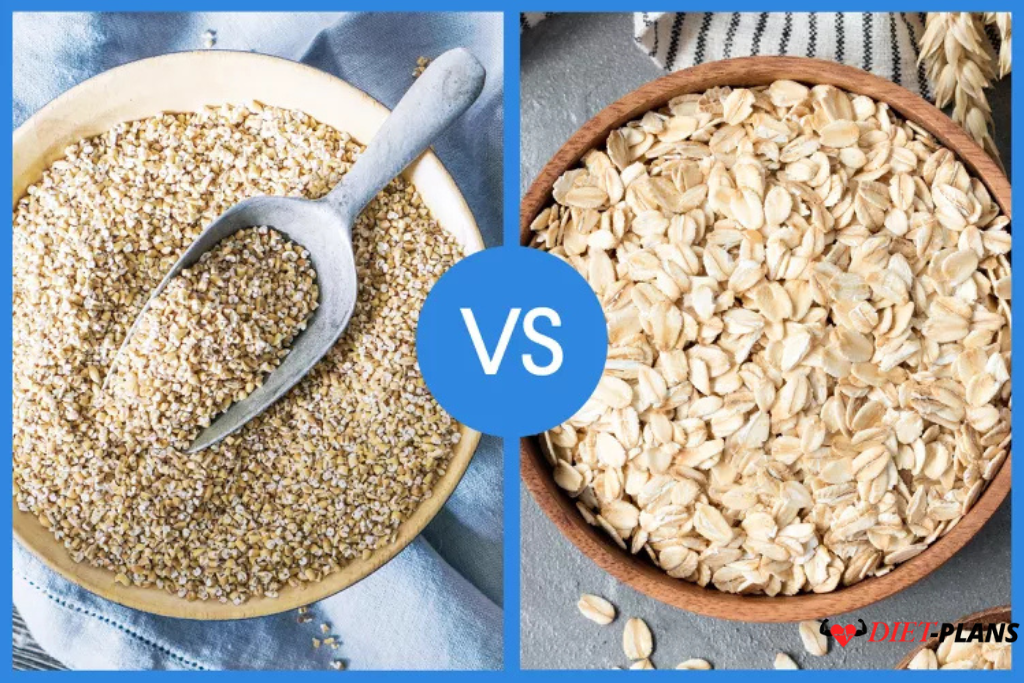Is Rolled Oats Better for Your Health Than Steel Cut Oats?
Grain of the oat kind has been a mainstay for thousands of years. The most popular application for them is to create oatmeal, also referred to as porridge or hot cereal. It just takes a glance at the dietary data to see why oats, like eggs, are a popular breakfast option. In addition to offering vital vitamins and protein, they are renowned for having a high fiber content, which encourages regularity and prolongs feelings of fullness.
There is more than one kind of oat to choose from when you go grocery shopping. Oats come in a variety of forms, including rolled, steel cut, fast, and immediate. Their diverse processing methods produce variable cook times, textures, and nutritional values. Here, we examine the differences between steel-cut and rolled oats, two popular varieties of oats, particularly concerning nutritional fiber.
Steel Cut Oats: What Are They?
Your oats have a long trip before they are ready for a hot dish of oatmeal for the morning. After harvesting, oats are cleaned and hulled. The edible portion, known as the kernel or groat, remains after the oat hulls are removed due to their disagreeable feel. Oat grains are the foundation of all oat products. They are regarded as the least processed oat kind.
Steel-cut oats, often called Irish oats, are the least processed oats after oat grains. It involves a steel blade, as the name implies. Steel-cut oats are chopped oat groats since the oats are sliced into several smaller pieces. However, why even slice them up? Oat groats have a chewy feel and require a long time to cook. Cutting them into steel-cut oatmeal shortens the cooking time and produces a more palatable texture. Steel-cut oatmeal retains some of their chewiness since they aren’t overly processed. They simmer on the stovetop for 20 to 30 minutes and have a nutty flavor.
According to Jenna Volpe, RDN, a serving size of steel-cut oats is ¼ cup dry. According to USDA statistics, this quantity of steel-cut oats offers the following nutrients:
- 170 calories
- 31g of carbohydrates
- 4g of fiber
- 3.5g of fat
- 4g of protein
What Are Oats Rolled?
Rolled oats, also referred to as old-fashioned oats, are little processed, much like steel-cut oats. They undergo more processing than steel-cut oats, however. According to Volpe, “when rolled oats are steamed and rolled out by machinery, they go through a certain amount of flattening and processing.” The oats are hulled, then steam-cooked, flattened, kiln-dried, and then gently toasted. As a result, rolled oats have a distinct texture from steel-cut oats without significantly altering their nutritional content.
Consequently, the chewiness and graininess of rolled oats are reduced. They have a softer, creamier texture and a somewhat milder taste. In addition, they cook more quickly than steel-cut oats. They may be cooked on the stovetop for 10 to 20 minutes or in the microwave for 3 to 5 minutes.
According to Volpe, ½ cup of dry rolled oats is a serving size. According to USDA statistics, this quantity of rolled oats offers the following nutrients:
- 180 calories
- 33g of carbohydrates
- 3g of fiber
- 3g of fat
- 5g of protein
Are Rolled Oats Not as Healthful as Steel Cut Oats?
Does the fact that steel-cut oats are less processed than rolled oats make them healthier? According to Volpe, “rolled oats and steel-cut oats are very similar from a nutritional standpoint.” There is little difference in their nutritional contents.
A serving of steel-cut oats has 170 calories, but a serving of rolled oats has 180 calories, just 10 more. Their fat percentages are also very close. There are 3.5 grams of fat in steel-cut oats and 3 grams in rolled oats.
The fiber content is one of the primary nutritional distinctions between rolled and steel-cut oats. According to Volpe, a serving of rolled oats has 3 grams of fiber, whereas a serving of steel-cut oats contains 4 grams. Additionally, steel-cut oats have somewhat less carbohydrate (31 grams) than rolled oats (33 grams). According to Volpe, “steel cuts have a lower glycemic index than rolled oats because they are higher in fiber and lower in carbohydrates.” They are thus less likely to result in a blood sugar increase.
In contrast to steel-cut oats, which provide 4 grams of protein, rolled oats have 5 grams.
Which is the Best, Then?
Both options may be beneficial. Choose steel-cut oats if you want to increase your fiber intake. Rolled oats can work well if you’re pressed for time or just want a softer texture.
Is It Possible to Switch Between Rolled and Steel Cut Oats?
When cooking porridge, you may use rolled oats and steel-cut oats interchangeably. Your oatmeal bowl’s foundation isn’t really important, so use whatever you have on hand and top it any way you choose.
On the other hand, baking with oats is a different matter. Technically, they may be used interchangeably, but doing so will modify a recipe’s texture and overall sensory appeal, according to Volpe. Because rolled oats are softer and steel-cut oats are chewier, you can have a textural problem.
Because rolled oats are softer and cook more quickly, Volpe suggests using them for overnight oats or stovetop cooking. Additionally, rolled oats are the preferred option for baked oatmeal and crispy granola. Steel-cut oats could be more durable for oatmeal dishes that are cooked in a slow cooker, she says.v

